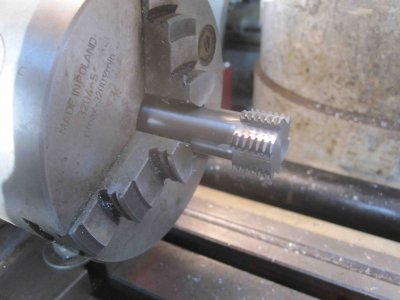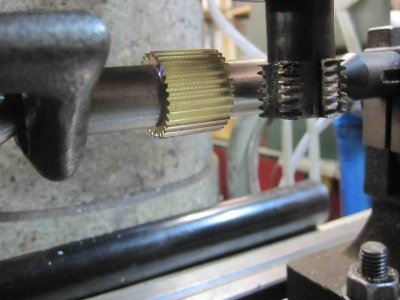The project is to make a 360 tooth, 1/2 inch thick, 10 pitch Acme thread aluminum gear. The plan was to cut a 10 pitch Acme parallel groves in a 1 inch diameter tool steel rod, then cut 6, at 45 degrees, slots parallel to the rod axis with a mill to make a hob. Finally heat treat, quench, and temper. The plan was to then mount the gear blank on a vertical rotary table, set the mill to the tooth angle and cut the gear with the hob, rotate the table a degree, and repeat.
I have made a side mill cutter with a similar technique by cutting threads and then cutting the slots, as above. This process produced clean threads and clean cutting teeth. Contrarily. the cutting of the paralled Acme groves produced a very messy part. I concluded the difference was when cutting the threads the machine freeplay was loaded against the cutting direction. While cutting the groves there was no free play load and the cutter vibrated back and forth. This resulted in removing too much material from the sides. The resulting teeth would be too narrow and not cut clear gear teeth.
Any thoughts on this process would be appreciated? Thanks, Dan
I have made a side mill cutter with a similar technique by cutting threads and then cutting the slots, as above. This process produced clean threads and clean cutting teeth. Contrarily. the cutting of the paralled Acme groves produced a very messy part. I concluded the difference was when cutting the threads the machine freeplay was loaded against the cutting direction. While cutting the groves there was no free play load and the cutter vibrated back and forth. This resulted in removing too much material from the sides. The resulting teeth would be too narrow and not cut clear gear teeth.
Any thoughts on this process would be appreciated? Thanks, Dan




